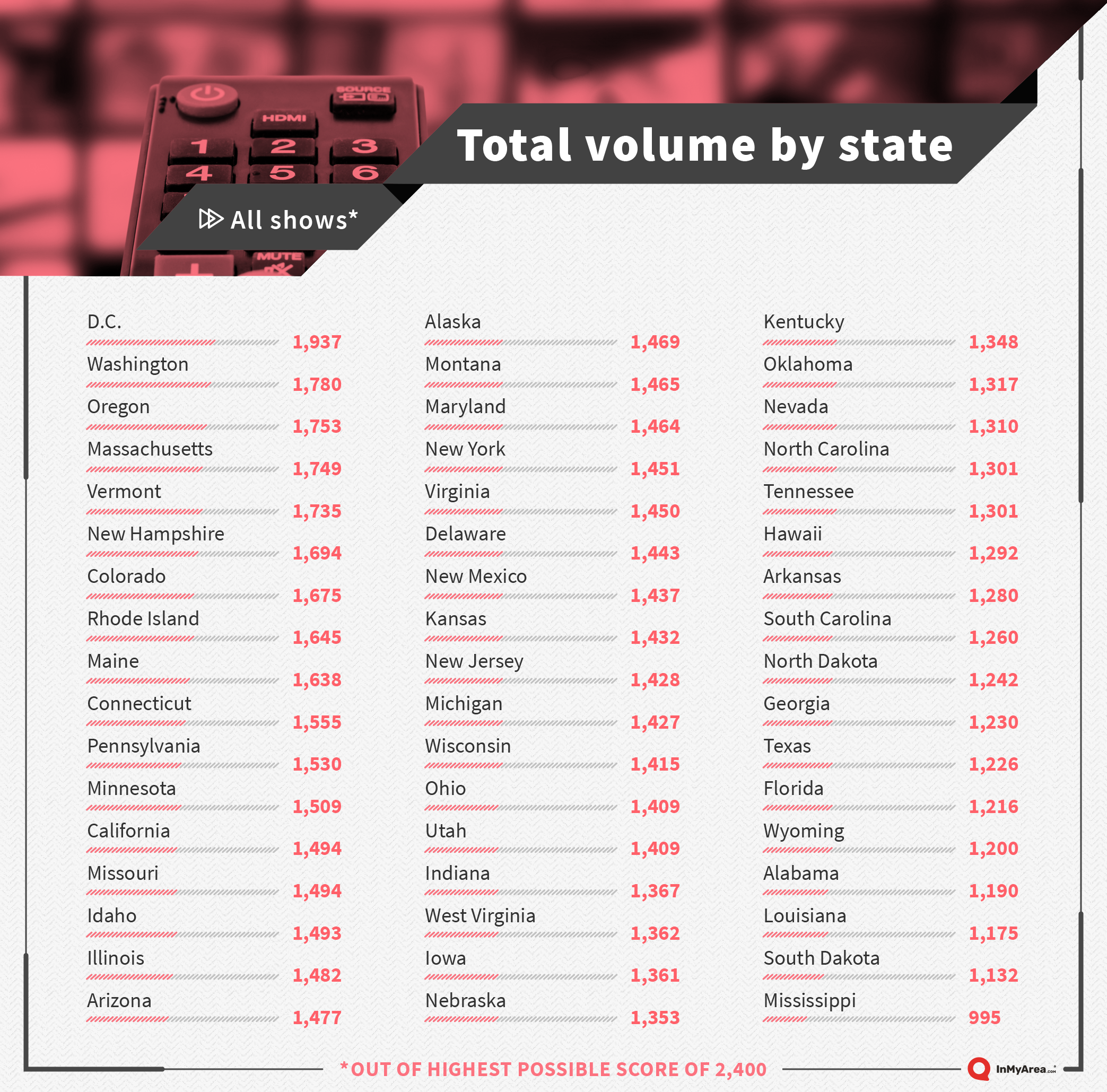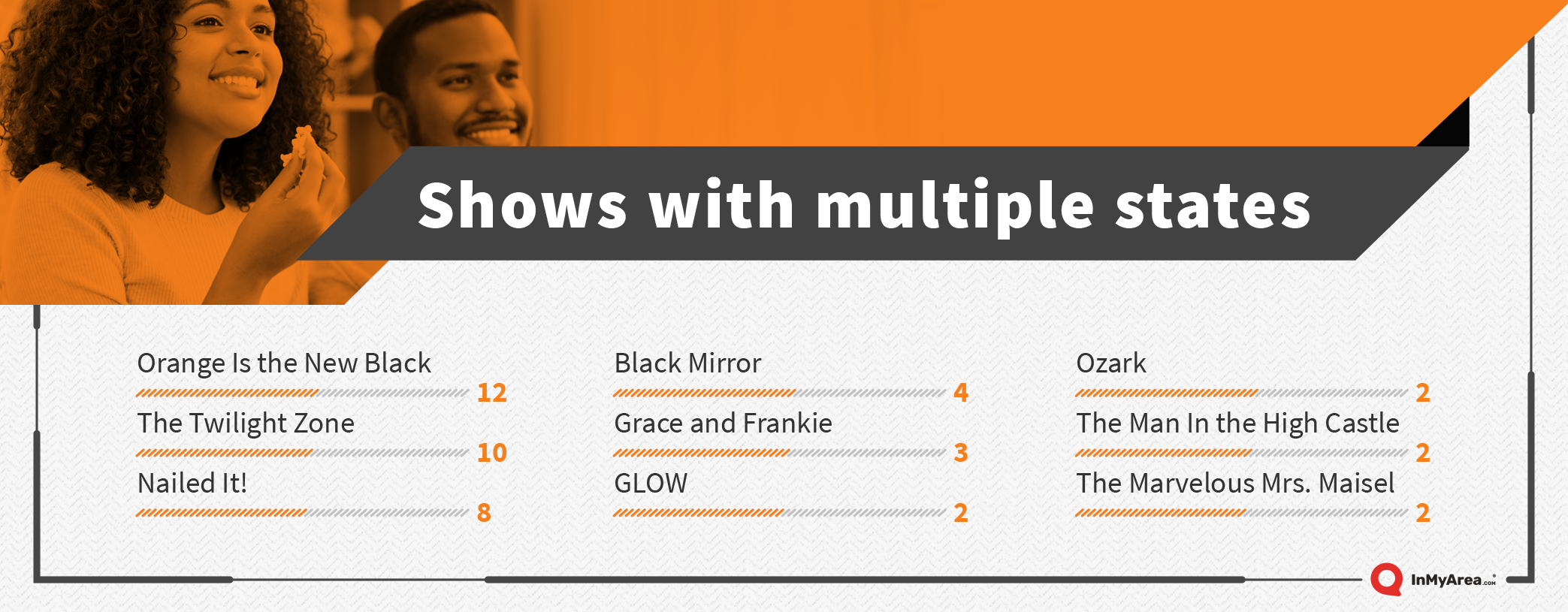An estimated 7 in 10 American households have at least one subscription to a streaming service, and the average streaming user in the U.S. subscribes to about three services in total. Internet users in the U.S. spend just over two hours per day watching streaming video on a smart TV or Roku-style device. That’s roughly equivalent to watching a feature film every single day.
We’re spending tons of time consuming streaming video, whether in the form of a hot new show or a classic series. But what do we know about which shows are actually our favorites? Streaming platforms are typically cagey about releasing viewership information, though Netflix has said the third season of its hit “Stranger Things” was viewed by 64 million households.
Still, the overall reach of streaming shows is difficult to quantify. For instance, Netflix’s own metric for counting views doesn’t necessarily equate to people actually enjoying a show. That’s because to qualify as a view, an account just needs to play 70% of one episode of a show (or 70% of a film). That could mean tuning in for as little as 30 minutes for a show like “Stranger Things.”
To understand which streaming shows are the most popular in the U.S. and in each state, we analyzed the past 12 months’ worth of Google search data for 24 current or recently ended shows that originated or mostly lived on a streaming platform.
Here’s a summary of our findings, some of which may be surprising:
- Ending an era: Prison dramedy “Orange Is the New Black” is the single most-searched streaming show in the U.S. One of Netflix’s oldest original series, the show ended its seven-season run with a storyline drawn from the ongoing fight over immigration.
- Everything old is new again: “The Twilight Zone,” a CBS All Access revival of the 1960s-era anthology series, was a close second.
- Nation’s capital in more ways than one: D.C. had the highest combined search volume for the streaming shows we analyzed.
- The Baby Yoda effect: Despite not premiering until the last few months of our study period, “The Mandalorian” was in the top half of the most-searched shows.
Read on for the full study, and jump to the bottom of the page for a detailed breakdown of our methodology.
Overall Streaming Interest by State
The streaming service arms race has gotten a great deal of attention over the past year, with challengers like Disney+, Peacock, HBO Max and Apple TV+ all entering the arena either in 2019 or expected over the course of 2020.
This means viewers are about to have an incredible number of options for what to watch, but not every state has embraced streaming entertainment in the same way.
To understand how popular streaming video is in each state, we combined the overall search volume in each state for the 24 shows we studied. What we found is that the nation’s capital is far and away the streaming capital of the U.S., while Mississippi has the lowest total interest level in streaming shows.

What Are We Watching?
Of the 24 shows we investigated, two performed far better than the rest — “Orange Is the New Black,” which in 2019 ended its long run on Netflix, and “The Twilight Zone,” which was relaunched in 2019 by filmmaker Jordan Peele for CBS All Access.

It shouldn’t come as a surprise that in 12 states, “Orange Is the New Black” is the favorite streaming show, followed by “The Twilight Zone” and “Nailed It!,” since they rank 1-3 on the total volume list. But some of the specifics about which states prefer which shows may be surprising.
To figure out each state’s favorite show, we compared total search volume for each show in each state, and whichever show had the highest total volume took the state. In cases where search volume figures were tied, we compared all of the tied shows to each other, and whichever was highest among them won the state.

Two shows that have garnered enormous attention in recent months, “Fleabag” and “The Mandalorian,” are favorites in just one state each, D.C. and Utah, respectively, though as we noted, Baby Yoda and his helmeted protector only came onto the scene in the latter part of the past 12 months, so checking back again in a few months could change the picture dramatically.
The top three shows overall combine to account for nearly 6 in 10 states, with a few other shows also taking the top spot in multiple states.

Other one-offs include:

New Shows Vs. Old Favorites
We’ve already talked a bit about how classic shows often outperform new series on streaming platforms. A pair of 2019 media reports indicated that rather than a prison dramedy or baking competition, the most-watched program on all of Netflix was “The Office,” streamed for some 52 billion minutes by Netflix’s users. Another beloved NBC sitcom, “Friends,” was second at about 33 billion minutes.
So we wanted to put the popularity of streaming shows into perspective. What does it really mean for “Stranger Things” to get 64 million views for its third season? It certainly seems impressive when you consider that the most popular network show over the past several years was CBS’s “The Big Bang Theory,” which garnered 23.4 million live viewers for its series finale in May 2019. Similarly, the series finale of HBO’s pop culture juggernaut “Game of Thrones” drew 19.3 million viewers with live and HBO Go/HBO Now views combined. Combined, the two don’t come close to the reported viewership for “Stranger Things.”
But let’s look at how these shows stack up against each other based on Google search volume rather than self-reported viewership data from Netflix. “Orange Is the New Black” was the original-streaming favorite, but the streaming champ doesn’t hold a candle to “Game of Thrones,” though nothing really does, to be fair.

Of course, “Game of Thrones” generated a huge amount of online debate, especially in its divisive last season, while “The Office” or “The Big Bang Theory” weren’t exactly filled with complex and controversial plots, nor were they primed for speculation about how things would end. So let’s see how some of streaming’s more mysterious shows compare to GoT. “The Mandalorian” comes closer than any of the other shows we’ve compared to GoT, which may prove predictive of the show’s ability to remain central to the cultural conversation, given that it premiered late in 2019.

With companies investing heavily in new content as well as libraries of established shows (streaming rights for “Friends” went for a reported $425 million), the stream of watchable content shows no signs of turning into a trickle anytime soon.
About This Story
To determine which streaming shows are most popular in each state, we examined the past 12 months of Google search volume data using the Google Trends platform, which you can access here.
We narrowed our list to 24 by eliminating shows that ended more than a year ago, and many streaming shows did not have enough data to make a fair comparison, whether because they are too new (like “Picard”) or simply didn’t produce adequate search volume in enough states (like “The Act”).
We also did not include shows that can be accessed via streaming services but did not have their first lives there. “The Office” is a notorious example of a heavily streamed show that was not a streaming original.
For 23 of the 24 shows we studied, the names of the shows were entered into the search fields as search topics rather than general search terms. What this helps ensure is that our data is not drawing in unrelated searches. The only exception was “The Mandalorian,” which is not yet established within Google Trends as a specified search topic, but based on searches related to the term as well as the period when searches peaked, we felt confident that there was no undue influence from unrelated searches and because the show has dominated the cultural conversation, it was important to include it in our analysis.
This tool does not tell us the total number of searches for a term but rather reveals search volume on a scale of 0-100, with 100 being the highest possible search volume for a term or topic. Additionally, the results are adjusted for population differences, so in some cases, certain states likely had a higher overall search number for certain shows, but another state had a higher concentration within all searches made in that state, meaning a greater percentage of searchers in that state were interested in the show in question.
